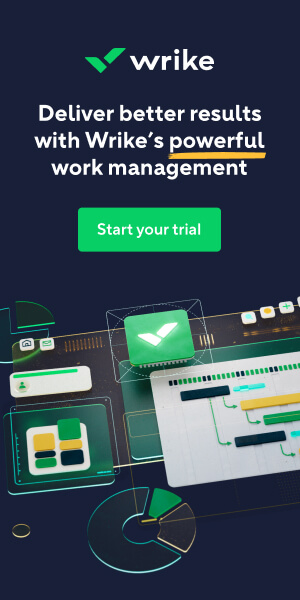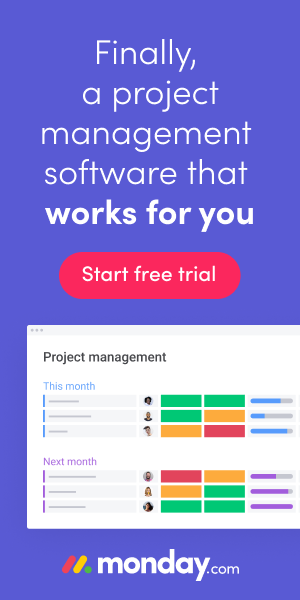At some point, most organizations will need to acquire vendor support. To obtain the support, organizations will issue various request documents to gather information and evaluate available vendors’ qualifications and pricing. This discovery process is launched when the organization issues a Request for Information (RFI), Request for Proposal (RFP), or a Request for Information (RFI).
While each seeks specific, actionable information, the three documents share numerous similarities and require the same attention to detail as you write them.
Featured Partners: Project Management Software
Which Request Do I Need?
Which request an organization issues depends on four factors:
- Where they are in the acquisition process
- Whether or not they already have qualified vendors short-listed to do the work
- If they simply need products provided
- If there is a need to obtain detailed information or the plan to perform the work, timing, and experience of the vendor
The Project Manager’s Role in Supporting Acquisition Requests
Project managers have varying support roles depending on whether the project manager is supporting the soliciting firm or the responding vendor.
During the project planning phase, the project manager will work with the business sponsor to determine if the work will be performed with existing resources, or whether it makes sense to acquire a vendor to support certain aspects.
The project manager would then work with the procurement team to start the acquisition process, including the scope of the work, timelines, and expertise needed.
When responding to acquisition requests, project managers for the responding firm may play the role of the bid manager. The bid manager supports the brainstorming and planning of the approach to meet the acquisition need and documents various aspects of the proposal response.
The bid manager also supports the proposal by communicating with the project team and relevant stakeholders to ensure all resources committed in the bid will be available if they win the contract.
Understanding the Different Types of Acquisition Requests
The top three request documents to support vendor acquisition are request for information (RFI), request for quote (RFQ) and request for proposal (RFP). Each serves a different purpose and is used in different situations.
RFIs: Educating potential customers
The purpose of an RFI is to obtain general capabilities information about the types of goods and/or services a vendor provides. RFIs are typically sought when an organization is in the early stage of planning.
Perhaps the organization is planning out its annual or three-year strategy and knows what type of vendors will be needed in the future. Also, organizations often request responses to RFIs when they would like to acquire a cadre of a certain type of vendor.
For example, an organization would like to start working with more small businesses, veteran-owned businesses, or woman-owned businesses, so they create an RFI to build a database of firms qualified to do future work. This may shorten the acquisition process in the future by having a short-listed group of firms from which to obtain additional information or solicit for RFQ and RFP responses.
Unlike an RFQ or RFP, RFIs do not have standard sections but rather requests for responses to certain questions. To prepare for an RFI, maintain an up-to-date capability statement with a strong paragraph or two on each core product or service that you can draw from.
Provide strong organizational background and small-business type if applicable, industry certifications, and key clients or sectors supported. Provide responses to the detailed questions posed regarding goods and services, which will also typically include questions about the expertise of key staff. That said, RFIs do not typically include pricing details.
RFQs: When pricing-focused information is needed
RFQs are typically used to obtain pricing for a very well-defined product or service. Oftentimes, RFQs are requested of existing vendors already vetted and deemed to have the skills and capabilities to provide the product or service.
The RFQ typically includes the pricing details, delivery timeline, line-item pricing breakdown, any assumptions or constraints, supplier contact information, and payment terms. The project manager may work with the financial office to obtain the information needed for the quote and then obtain needed approvals from leadership.
RFPs: Detailed planning, pricing, and past experience to meet the need
RFPs are the most complex request type to respond to. They sometimes follow an RFI response. RFPs are used to gather information from potential vendors. They may be open to all vendors or only requested for a vetted group of vendors.
RFPs detail the customer’s needs and provide the detailed criteria needed to meet the needs. Typical sections include the statement of work, proposal instructions, evaluation criteria, deliverables, and pricing requirements.
RFP responses may range from 10 pages to 100 pages. For this response, it is important that the bid manager assemble a team of subject matter experts, strong writers, content reviewers, compliance reviewers, and price-to-win professionals. The bid manager will need to coordinate a strong approach to meet the customer need and a timeline to ensure a strong, timely, compliant response.
Best Practices for Responding to Acquisition Requests
Here are a few basic best practices to get you prepared to respond to any request.
- Generally speaking, always follow the instructions provided, meeting the requirements for page count, content, organization, provided templates, and deadlines. Exacting compliance is the first step to a successful acquisition response.
- Perform an initial review for ambiguities, and ask specific questions in writing if anything is unclear.
- Maintain a few key documents, so you are prepared to respond to any of these documents effectively and efficiently using up-to-date standard information that can be used as a starting point. (i.e., services information, standard pricing and level of effort, and high-level process for the work you provide).
- Edit the document thoroughly for consistency, clarity, and compliance — quality is key.
While these basics will get you through the door of compliance and on-time submission, incorporate these advanced tips into your organizational process based on the request you are responding to.
| RFIs | RFQs | RFPs |
|---|---|---|
|
Maintain an up-to-date capabilities statement. | Maintain standard pricing. | Start early, and organize the team (writers, reviewers, page count by section). |
|
Do not provide pricing. | Triple-check your math. |
Devise a proposal calendar, and strictly manage it like a project. Define page count. |
|
Pictures are often valuable. | Determine which type of pricing is appropriate (fixed price or hourly) based on clarity of the scope. | Align your response outline to the requirements in the RFP document. Do not reorder the response. Create acompliance matrix to ensure compliance with all requirements. |
|
Cite past experiences closely relevant in size, scope, and budget. | ||
|
Share types of issues that could arise and how your team has mitigated them in the past. | ||
|
Include various color reviews to build, perfect, and edit the storyline. | ||
|
Use meaningful tables and visuals to tell the story to save page count. |
Featured Partners: Project Management Software
1 Jira
Simple and powerful way to track and manage issues. It handles all kinds of issues (bugs, features, enhancements, and tasks) and can be used for bug tracking, development help, project management, or group task cataloging.
2 Trello
Organize anything, together. Trello is a collaboration tool that organizes your projects into boards. In one glance, know what’s being worked on, who’s working on what, and where something is in a process.












